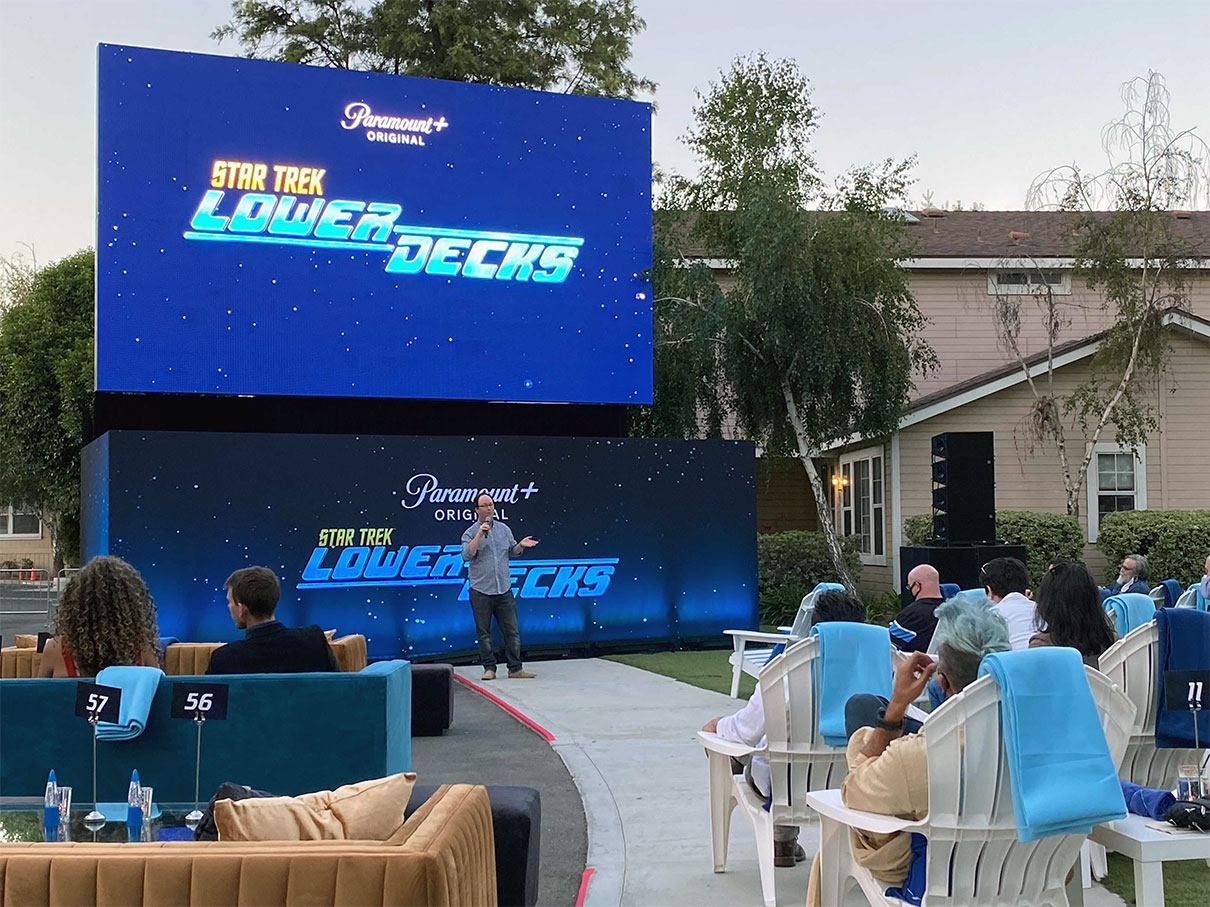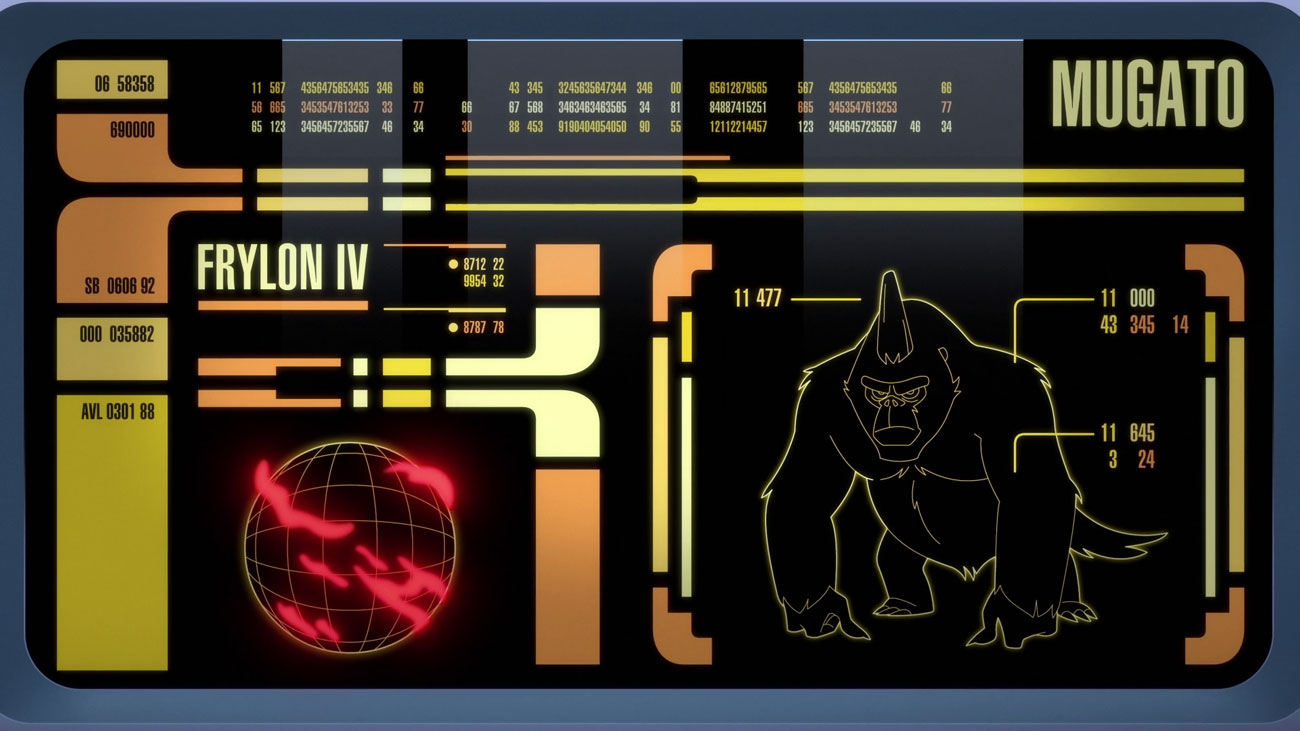We last talked with Star Trek: Lower Decks showrunner Mike McMahan just as the animated series was launching last year — and as the show approaches the halfway point of Season 2, it’s time to hear from Lower Decks’ own captain once more about Easter eggs, Mugato pronunciations, and a look ahead to the back half of the season.
Our team caught up with McMahan at CBS’s Season 2 premiere event in early August, where at the time we’d had the opportunity to watch the first five episodes of the season, including next week’s “An Embarrassment of Dooplers” — but don’t worry, there aren’t any spoilers for that upcoming episode here.
TREKCORE: There are so many more Star Trek Easter eggs in Season 2 so far, compared to last season — was it a mission to ramp up the franchise tie-in references this year?
MIKE McMAHAN: Well, look — we don’t ever go into an episode being like, “We’re going to make the Internet’s job hard this week, and put in extra Easter eggs!”
Occasionally, we’ll be talking to the artists, and suggest that we visit a location in an episode where there’s a bevy of potentially referential stuff in the background — like when you go to a diner and they have lots of accumulated stuff on the walls — and we did that a couple of times this season.
So the number of Easter eggs probably shot through the roof, just because of a couple locations [like the collector’s ship in “Kayshon, His Eyes Open”] and others that I don’t want to give away. No spoilers! Like, I love the lists of stuff people find, because my artists surprise me sometimes, too! They’ll sneak stuff in there.
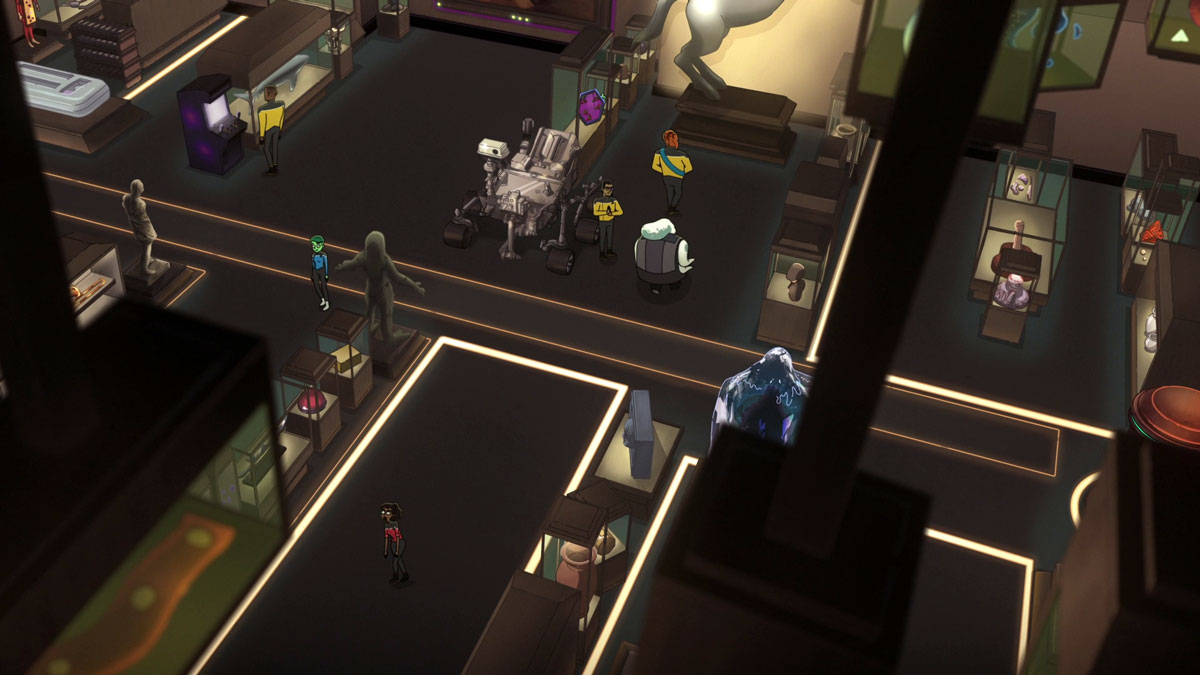
TREKCORE: So even the artists are sneaking in things without you knowing it?
McMAHAN: I mean, it’s Season 2, right? So they get the game — the know what makes us laugh, and what we like. But yeah, sometimes they’ll slip something in that’s so esoteric….
Look, we’re an animated show that has to feel like Star Trek. So there’s never a reference, really, to real-world locations — they only reference stuff from the universe! So sometimes they’ll put in a reference to something that I will miss completely until we get to like color [review in post-production] or something, where I’m looking at things frame-by-frame.
I tell them, “Oh, you sneaky guys!” They made the decision because it felt like it was part of the Trek world — and as soon as you see it and understand why it’s there, it’s like “Yes! One hundred percent!” But the reason that I really like that is because when we’re writing and making these episodes, we want you watch it multiple times.
I think there’s a certain generation, now, that want to be able to look at their phones, or make pasta or whatever, and not be leaning into their TV. They grew up with TV as background noise — but we’re on Paramount+, and if you’re going to watch our show, you have to choose to watch it.
Lower Decks is for people who put on Next Generation or Voyager or any of them as comfort viewing. Even on Rick and Morty, every group of artists I worked with — all of the animators — they’re always running TNG and Voyager and other Star Trek in the background because there’s like a million episodes.
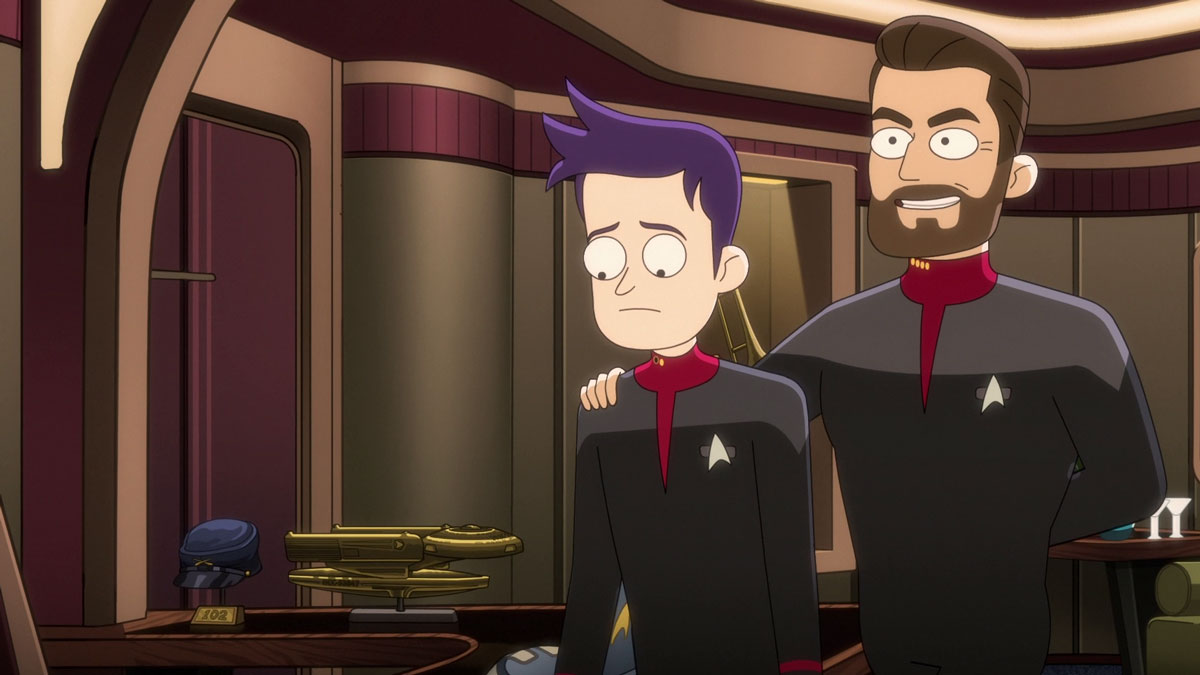
It’s like hanging out with their friends while they’re working all day. So a lot of Rick and Morty got animated with Star Trek running on the screens right next to them — and the same thing is happening on Lower Decks, except now we’re watching Star Trek for work.
When you finish an episode and it feels like, “Holy crap, they got a whole episode into just 22 minutes?!,” you watch it again. Then you watch it again. Then, once you know it well enough, you can turn it on in the background and let it wash over you — because we have only ten 22-minute episodes each year, and when you go back, I want you to see things you never noticed the first two or three times through.
But more important to me than Easter eggs are the reflections on earlier Trek, where there are things or actions that remind me of an episode I’ve seen or a character choice from the past that I remember, people finding those types of thing almost impress me more.
I almost get more excited for the connections you can make from a character or story point of view, because we’re trying to honor that as much as we are looking to show, like, a combadge you might recognize.
TREKCORE: So talking about things from the past, we have to ask you about all the pronunciation jokes in “Mugato, Gumato,” which is SUCH an ‘inside baseball’ Star Trek gag.
McMAHAN: I mean, look, we’ve all seen these episodes a thousand times like I’ve said — but when we decide to do something heavily based on a past episode, all of the Lower Decks writers watch it together [in their own homes] and we have a group text thread calling stuff out.
Ben Rodgers, who wrote that episode, just could not get over how NOBODY decided on a consistent way for the actors to pronounce “Mugato” in that episode [“A Private Little War”].
TREKCORE: DeForest Kelley couldn’t even say it the way it was written — to the point where they had to change the alien’s name.
McMAHAN: Oh, a hundred percent. They probably even cut out even more versions!
This time, watching it again, we digging into it in a new way, watching it with more than one person; your brain reacts in a different way, finding things that are funny because of how someone else observes things.
On top of that, you’re realizing the [production] mistakes they made, like now they didn’t go back and reshoot things because maybe the actors were getting prickly about mispronouncing this made-up word!
To us, that’s something to celebrate rather than something to make fun of.
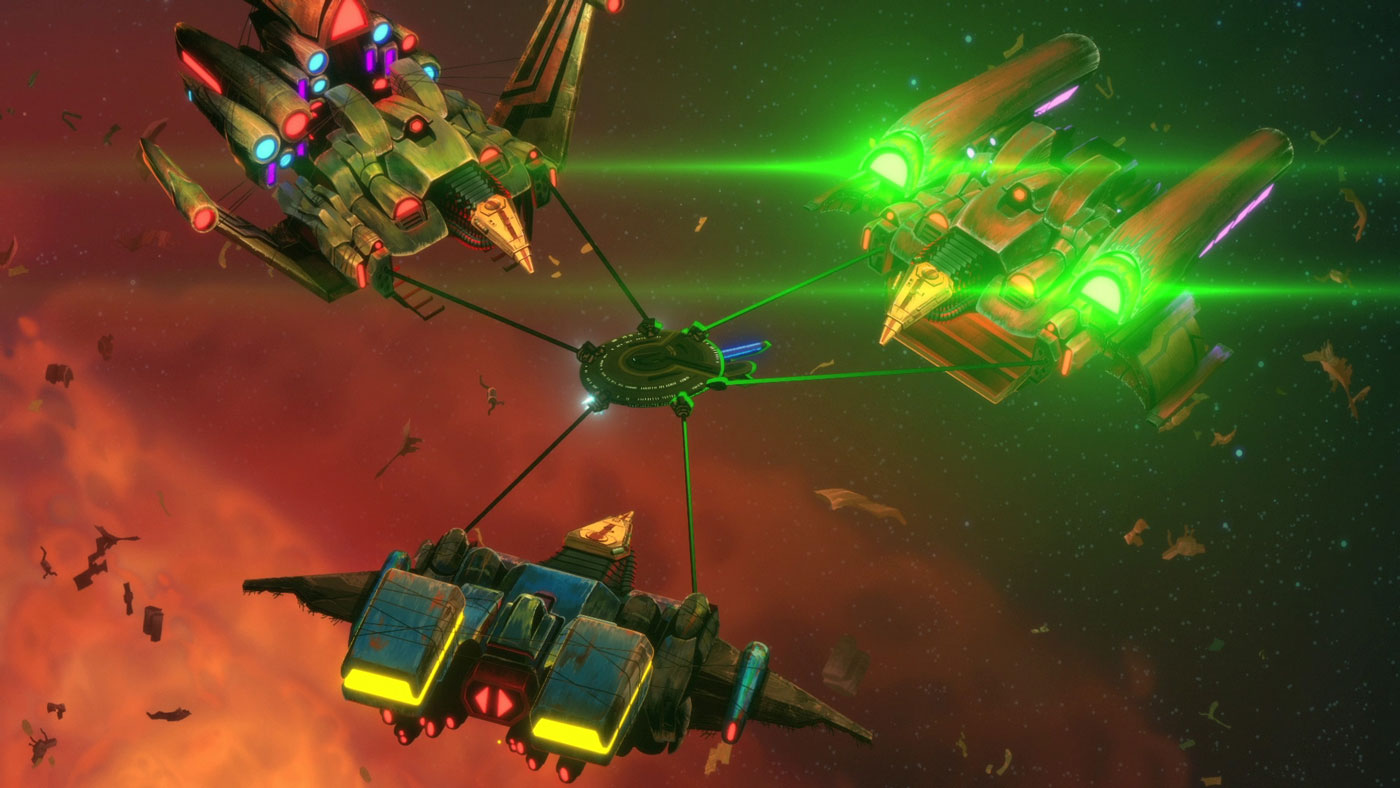
TREKCORE: So looking ahead to the back half of the season — last year, things really ramped up as the finale approached, with the movie episode and then the big Pakled face-off in the end. Is that the trajectory for Season 2 as well?
McMAHAN: Well, accidentally I would say, the first half of Season 2 is like, “Hey, welcome back!” The second half, though, is more like “Okay — let’s go!”
I get a little bit of a chill knowing that the last episode you’ve seen is 205 [“An Embarrassment of Dooplers”], because to me that feels like a good mid-season finale. On another show, that could be a season finale, honestly, because of [how that episode goes].
To be honest, my very favorite episodes of Season 2 are in the second half of the year, and not just because they’re cinematic or theatrical — I mean, some of them are — but we just pushed to do stuff that breaks our own rules in those last five episodes.
So in the first season, we did the trial-episode-that-wasn’t-really-a-trial [“Veritas”], which was based upon me tuning into a Star Trek episode as a kid and not knowing the context about what was happening. Trying to explain that to the studio executives, I was like, “This is in the DNA of Star Trek to me.” Same thing with parodying the movies [“Crisis Point”] and having it turn into a big character therapy episode.
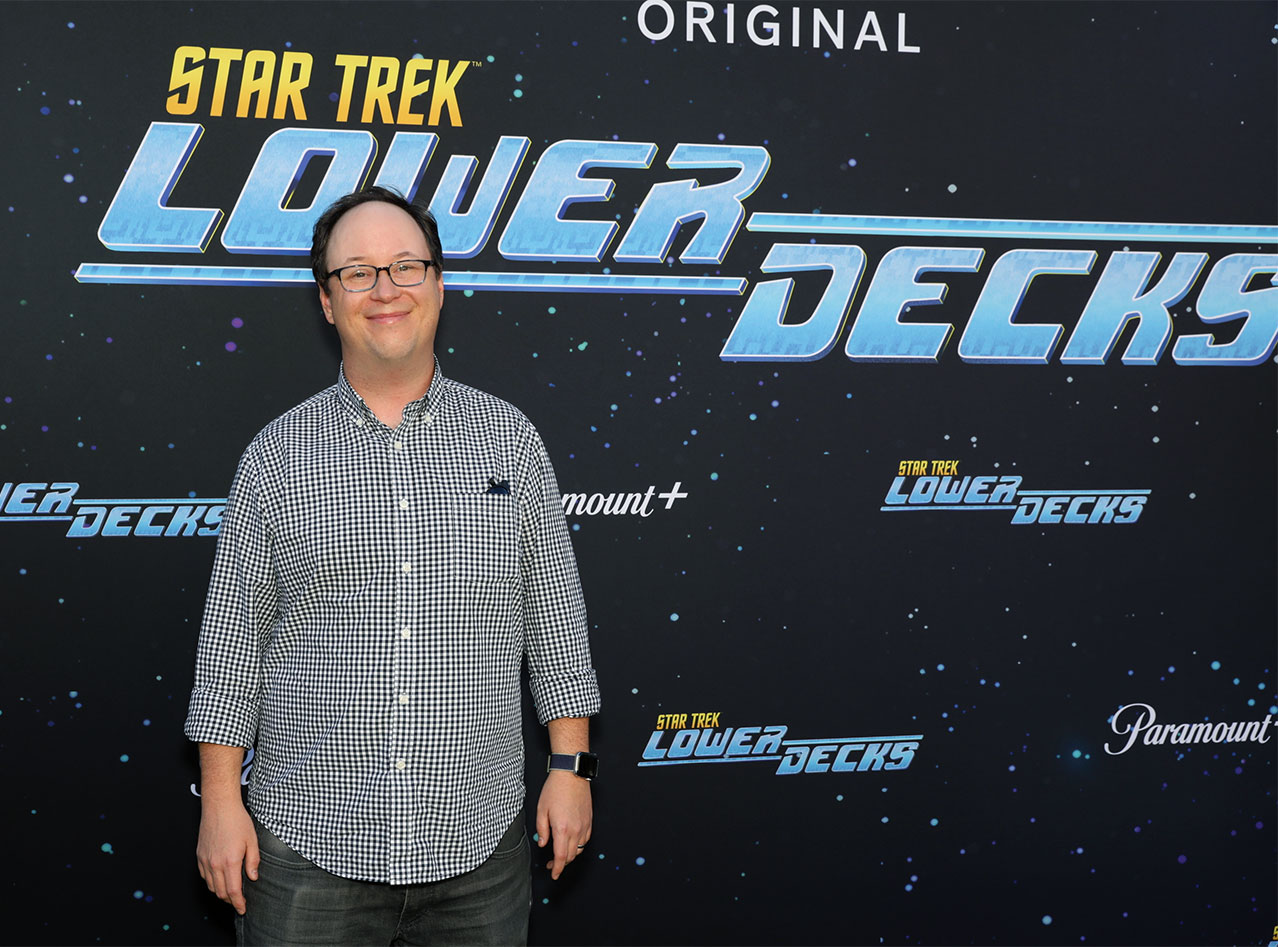
My very favorite episodes are in the second half of the season. And not just because they’re cinematic or theatrical, I mean, some of them are, but like we just, we pushed to do stuff that breaks our own rules in the second half of the season.
In that finale [“No Small Parts”], it’s like, how do you fit four stories, and comedy, and a really great-feeling Star Trek episode that means something into just 22 minutes. And in Season 2, you’re going to see we’re doing it again.
I’m writing the finale of Season 3 right now, and it’s king of happening again — and really it feels like it’s like that in every episode of Season 3. I just… it gets me really excited.
This interview has been condensed and edited for clarity.
Star Trek: Lower Decks returns on September 9 with “An Embarrassment of Dooplers” on Paramount+ in the United States and CTV Sci Fi Channel in Canada, followed by Amazon Prime Video (in select international regions) on September 10.

